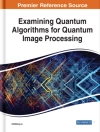This book presents the leading models of social network diffusion that are used to demonstrate the spread of disease, ideas, and behavior. It introduces diffusion models from the fields of computer science (independent cascade and linear threshold), sociology (tipping models), physics (voter models), biology (evolutionary models), and epidemiology (SIR/SIS and related models). A variety of properties and problems related to these models are discussed including identifying seeds sets to initiate diffusion, game theoretic problems, predicting diffusion events, and more. The book explores numerous connections between social network diffusion research and artificial intelligence through topics such as agent-based modeling, logic programming, game theory, learning, and data mining. The book also surveys key empirical results in social network diffusion, and reviews the classic and cutting-edge research with a focus on open problems.
Tabella dei contenuti
Introduction.- The SIR Model and Identification of Spreaders.- The Tipping Model and the Minimum Seed Problem.- The Independent Cascade and Linear Threshold Models.- Logic Programming Based Diffusion Models.- Evolutionary Graph Theory.- Examining Diffusion in the Real World.- Conclusion.












